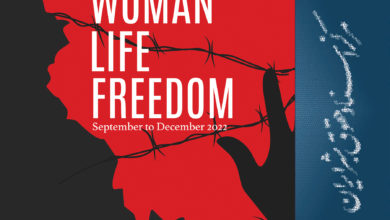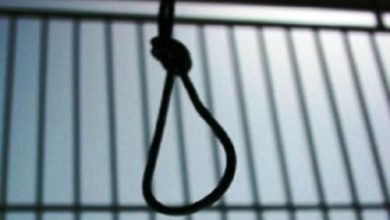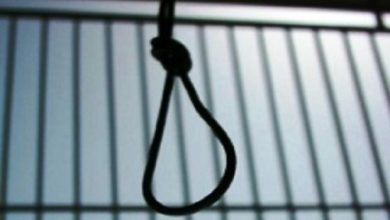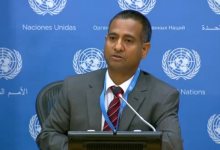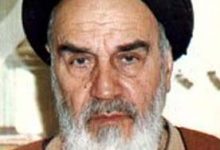Aadel Collection
Full disclosure of deaths and torture at notorious detention centre
AMNESTY INTERNATIONAL
PUBLIC STATEMENT
Al Index: MDE 13/071/2010
2 July 2010
Iran: Full disclosure required of deaths and torture at notorious
detention centre
Amnesty International has called on the Iranian authorities to disclose immediately the full
facts of the case in which two individuals are reported to have been sentenced to death for
abusing detainees at the Kahrizak detention centre, south of Tehran, last year.
On 30 June 2010, Iranian state news agencies reported that the trial of 12 people — said
earlier to have been 11 policemen and one detainee - had been concluded. They had been
tried for committing abuses at Kahrizak, where at least three detainees died in custody as a
result of torture and other ill-treatment. Two defendants were reported to have been sentenced
to death for carrying out “pre-meditated beatings resulting in murder”, while nine were
sentenced to undisclosed prison terms and floggings, and ordered to pay compensation and be
temporarily suspended from duty, and one was acquitted. The two sentenced to death also
received undisclosed prison terms and were ordered to receive floggings, pay fines and
compensation, and temporarily suspended from duty. All the convictions and sentences are
subject to appeal.
The trial of the 12 is reported to have been held behind closed doors in the presence of the
victims' families so the details of the charges and evidence against them remain unclear,
suggesting that the Iranian authorities are keen to continue covering up the serious abuses
that occurred at Kahrizak detention centre last year when it was used to imprison protestors in
the wake of the disputed presidential election in June 2009.
Likewise, the Iranian authorities have not disclosed the identities of the 12 defendants and
what positions or ranks they held, prompting suspicion that they may be low-ranking officials
who are effectively being made the scapegoats for a wider system of abuse whose architects
continue to hold senior positions in the government and judiciary.
Kahrizak quickly became notorious after the 12 June 2009 presidential election when
peaceful protestors were arrested, detained there and subjected to torture and other serious
abuse. At first, prison officials said that two of the three who died had suffered from
meningitis, but subsequent forensic reports indicated that all three had died as a result of
severe beatings.
In July 2009, following the escalating reports of abuse, Kahrizak was closed down by order of
Iran's Supreme Leader and it was reported that the head of the prison and other officials had
been arrested.
Later, a special parliamentary investigation committee said in January 2010 that “serious
action” should be taken against “all elements responsible ... which may include judicial
officials, government officials and the police”, suggesting that judicial officials who had
authorized the transfer of detainees to Kahrizak could be among those who should be held to
account.
Amnesty International is calling on the Iranian authorities to disclose the full facts of the
investigation into the torture and other serious abuses that were committed at Kahrizak and
the details of the charges and evidence against those who were tried. Such a disclosure is
essential to ensure that the rights of the victims and their families to truth and justice are
upheld.
Amnesty International is also urging the Iranian authorities to disclose the names of the
defendants and the positions that they held at the time of the events at Kahrizak, and to
provide details of their trial and whether this was held in conformity with international fair trial
standards.
Amnesty International opposes the death penalty in all cases, whatever the magnitude of the
crime.
Background
The Kahrizak defendants' trial is the only step that the Iranian authorities have taken up to
now to bring to justice those responsible for the serious human rights violations that have been
committed since the June 2009 election.
In January 2010, for example, the authorities said that the cases of 17 individuals killed “in
different ways” in Tehran during the post-election events had been sent to Tehran Province
General Court for investigation after their families submitted complaints to the Tehran
Prosecutor. However, the report said that those responsible had not yet been identified, and
the files had been sent to the court “for the payment of compensation”.
In January 2010, the death of another individual, Ramin Qahremani - was linked specifically
to his time in Kahrizak. However, his death was not included in the recently-ended trial. In
February 2010, an MR Parviz Sorouri said that the cause of his death was not known and the
case required further forensic reports, which the parliamentary fact-finding Committee would
look at and then present their conclusions to the Judiciary. No conclusion is known to have
been reached, almost a year after Ramin Qahremani's death.
Likewise, the suspicious death in November 2009 of Ramin Pourandarjani, a doctor who
treated inmates at Kahrizak as part of his military service, remains without conclusion.
Officials first told his family that he committed suicide, then that he had suffered a heart
attack and finally concluded that he had been poisoned by pills placed in his food. However,
in June 2010, Ramin Pourandarjani's father said that he had written to the Judiciary
requesting a fresh investigation, based on a report by the first policeman who had attended the
scene in which he had noted that “signs of bruising and blood spots are visible in the
[ victim's] neck area”. This had not been referred to in the subsequent Coroner's Report which
had concluded poisoning was the cause of death. Ramin Pourandarjani's family were not
permitted to see his body after his death.


